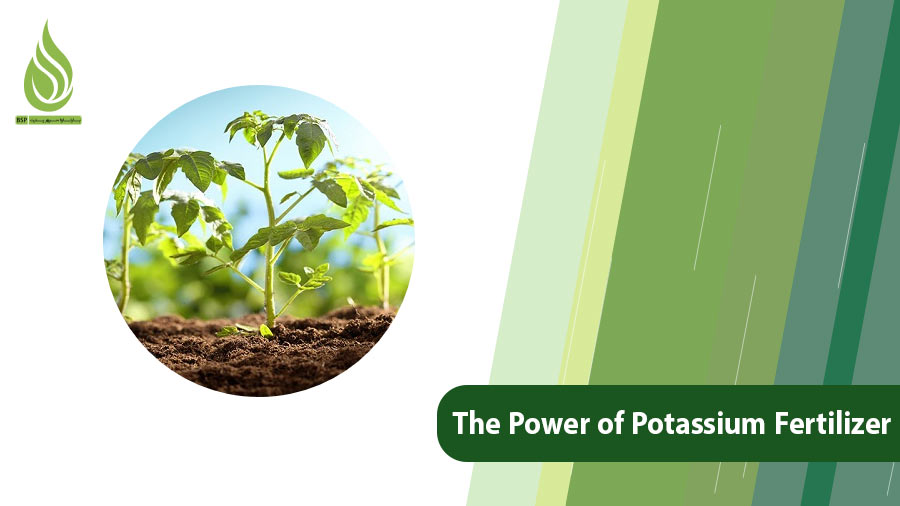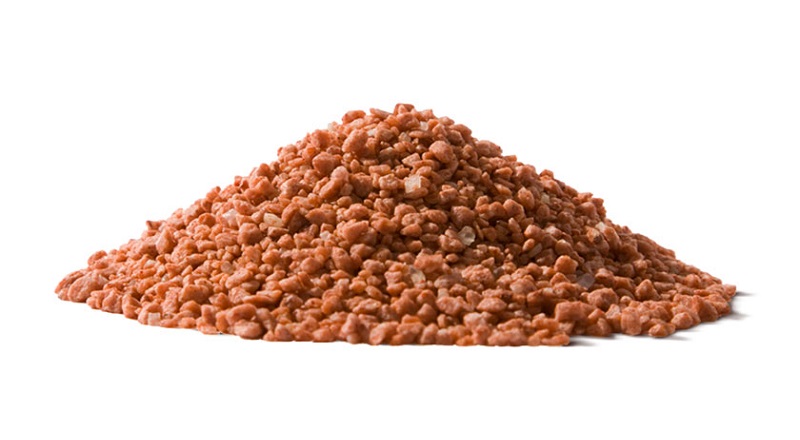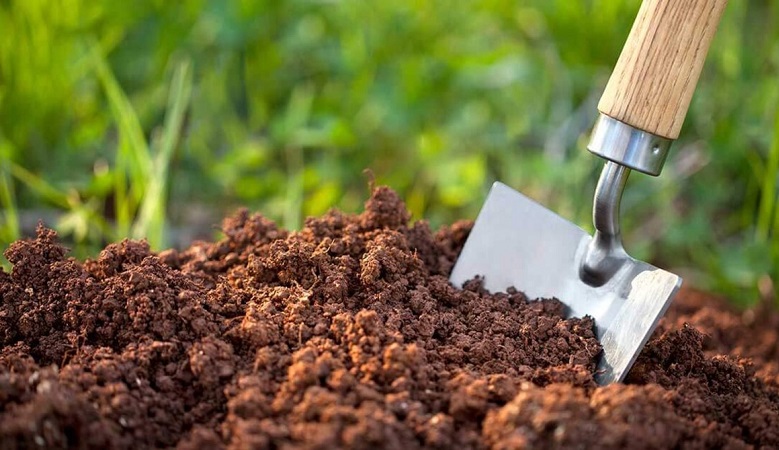
Unlocking Growth: The Power of Potassium Fertilizer
Plants and trees thrive when their essential nutritional needs are met. Potassium is a key nutrient crucial for their health, commonly found in potassium fertilizer. In this article, discover the benefits of potassium for plants and the risks of potassium deficiency. Learn about different types of potash fertilizers and the best ways to use them for optimal plant growth.
Exploring Potassium: Essential for Plant Growth
Potassium, an essential element, is abundant in potash—a mineral salt processed in factories to create valuable agricultural fertilizers. As a key macro element vital for plants and trees, potassium plays a crucial role in their growth and productivity. From tomatoes to grapes, a variety of crops like potatoes, carrots, and citrus trees benefit from potash fertilizers.
Recognized by the symbol K, potassium in soil is predominantly stable and slowly released, with over 90% resistance to rapid decomposition. However, this natural reserve falls short of meeting plant demands, necessitating supplemental fertilizers.
Critical for plant physiological processes, potassium fosters protein, oil, and starch production in seeds while enhancing vitamin C and sugar levels in fruits. Additionally, adequate potassium boosts the strength of cereal stalks and promotes the development of larger seeds, ensuring robust plant growth and productivity.

Unlocking the Benefits of Potassium Fertilizer for Plants and Trees
Potassium stands as a cornerstone element crucial for the growth and vitality of plants, driving various essential plant functions. Here’s a glimpse into the multitude of advantages that potassium fertilizer offers to plants:
- Water Regulation: Potassium aids in maintaining water balance within plants, controlling water loss through the regulation of stomatal function.
- Root Development: It fosters robust root growth, enhancing the water and nutrient absorption abilities of plants.
- Stress Resilience: Potassium fortifies plants against environmental stresses like drought, heat, cold, and diseases, bolstering cell walls and water regulation for increased resilience.
- Quality Enhancement: It improves the quality of fruits and vegetables, enhancing characteristics like size, flavor, and color, resulting in juicier, sweeter, and more vibrant produce.
- Metabolic Support: Potassium is involved in crucial metabolic reactions, promoting protein synthesis, and energy production, and elevating the nutritional value of plant products.
- Photosynthesis Boost: By enhancing photosynthetic efficiency, potassium elevates sugar and energy production in plants.
- Nutrient Balance: It aids in regulating the absorption of other nutrients such as nitrogen and phosphorus, fostering overall plant growth.
- Nutrient Transport: Potassium facilitates the transfer of nutrients and sugars from leaves to other plant parts.
- Microbial Support: Fertilizers rich in potassium promote a balanced microbial environment in the soil, enhancing plant nutrition.
- Enzyme Activation: Potassium activates over sixty enzymes crucial for plant growth, catalyzing vital biochemical reactions involved in processes like photosynthesis and respiration.
- Resistance Enhancement: Potash fertilizer boosts plant resilience against bending and rot, ensuring healthier, sturdier plants.
Given these advantages, potassium is deemed a vital element in plant nutrition, essential for the robust and optimal growth of plants. It holds a prominent status in the agricultural sector as the most widely utilized element. Beyond agriculture, potassium finds utility across various industries, including the chemical sector, animal feed production, food processing, soap manufacturing, and more.

Understanding the Impact of Potassium Deficiency on Plants
When plants lack potassium, they encounter a host of issues and challenges:
- Stunted Growth: Potassium deficiency hampers plant growth, resulting in slower development and compromised root and branch growth.
- Leaf Yellowing: Commonly, leaves exhibit yellowing along the edges—a typical sign of potassium deficiency that initially manifests in lower leaves.
- Diminished Fruit Quality: Plants deficient in potassium yield fruits of inferior quality, characterized by smaller size, lackluster taste, and dull color.
- Susceptibility to Diseases: Potassium-deprived plants are more susceptible to diseases and pests, showing reduced resilience to environmental stresses.
- Photosynthesis Impairment: The deficiency can hinder photosynthesis efficiency, leading to decreased energy and sugar production within the plant.
- Leaf Dropping and Brittle Texture: Leaves may drop prematurely or become brittle due to structural weakness induced by potassium deficiency.
- Seed Production Reduction: Agricultural plants suffering from potassium deficiency often experience decreased seed production and compromised seed quality.
- Water Regulation Issues: Potassium deficiency impairs the plant’s ability to regulate water, potentially leading to drought conditions and water stress.
- Delayed Maturity: Plants deficient in potassium typically mature later, prolonging the harvest period and impacting overall crop yield.
Exploring the Downsides of Excessive Potassium Fertilization
While potassium is vital for plant growth and productivity, maintaining a balance in fertilization is key to optimal outcomes. Excessive potassium levels can lead to several drawbacks:
- Nutrient Interference: Overabundance of potassium can hinder the absorption of essential nutrients like calcium and magnesium, potentially causing deficiencies in these elements, particularly noticeable in plants thriving in sandy soils.
- Root Damage: Excess potassium can harm roots, impede chlorophyll production, elevate soil pH levels, stunt plant growth, and manifest as leaf burn symptoms.
To mitigate these issues, meticulous monitoring of potassium levels in the soil and plant environment is crucial to ensure healthy growth and prevent detrimental effects on plants.
Exploring Different Types of Potassium Fertilizers
Potassium fertilizers come in various forms, each with unique characteristics and applications. Let’s delve into some common types:
- Potassium Chloride Fertilizer: Widely used and cost-effective, potassium chloride fertilizer, sourced from mines, typically contains 60-62% potassium. While suitable for most plants, excessive use can lead to soil salinity and compaction. It’s recommended to follow up with irrigation post-application to dissolve any residual fertilizer.
- Potassium Sulfate Fertilizer: With 50% potassium and devoid of chlorine, potassium sulfate fertilizer also includes sulfur. Ideal for chlorine-sensitive fruits and vegetables, its usage can increase soil acidity.
- NPK Fertilizer: This complete fertilizer combines nitrogen, phosphorus, and potassium. Available in varying compositions, such as 36-12-12, where the numbers represent the percentage of each element, with 36% potassium, 12% phosphorus, and 12% nitrogen. Opt for an NPK blend with a higher potassium percentage if your soil requires additional potassium supplementation.

- Potassium Nitrate Fertilizer: With a potassium content of 44% and nitrogen at 13%, potassium nitrate fertilizer is chlorine-free. Ideal for plants requiring both potassium and nitrogen, it’s commonly utilized to enhance the vegetative growth of trees. Despite its efficacy, this fertilizer comes at a higher price point compared to others.
- Potassium Phosphate Fertilizer: Combining potassium and phosphorus, this fertilizer is tailored to stimulate root growth and flowering. It serves as an excellent choice when the soil demands not only potassium but also phosphorus. Notably, potassium phosphate fertilizer seamlessly complements nitrogen fertilizer, allowing for simultaneous application to maximize plant growth.
As previously outlined, the majority of potassium fertilizers are formulated in conjunction with other essential elements. Apart from the mentioned varieties, potassium thiosulfate, potassium hydroxide, and potassium magnesium sulfate fertilizers hold significant roles in agriculture. However, there are instances when farmers opt for single-element solutions, seeking out fertilizers solely rich in potassium.
In such scenarios, acquiring a fertilizer exclusively packed with potassium is recommended. Notably, beyond mineral fertilizers, organic alternatives like animal manure and composts stand out for their potassium content. These organic fertilizers not only enhance soil structure but also deliver vital nutrients to plants gradually, fostering overall plant health and growth.
Optimizing Potassium Fertilizer Application
Determining the ideal timing and quantity of potash fertilizer varies across diverse plants and trees. Conducting a soil test is paramount before proceeding with any potassium application. Through this test, soil samples from various sections are analyzed to gauge soil nutrient requirements and deficiencies accurately. Based on these findings and the plant type, the appropriate amount and timing of potassium fertilizer application are determined. If you lack farming expertise, seeking guidance from an agronomist or seasoned farmer on fertilization schedules is advisable.
Typically, before planting, incorporating potassium fertilizer into the soil facilitates root accessibility and supports initial plant growth. Throughout the growing season, particularly during blossoming and fruiting phases, potassium fertilizer usage can enhance both fruit yield and quality. For specific plants like pistachio trees, introducing potassium a few weeks before harvest can elevate fruit and seed quality significantly. Additionally, if signs of potassium deficiency surface during the growing season—like leaf yellowing or diminished fruit quality—swift potassium fertilizer supplementation is recommended.
The optimal timing for potassium fertilizer application hinges on the plant type and prevailing conditions. Hence, it’s crucial to tailor your approach to the plant’s unique requirements and the environmental setting for the best results.
Determining the Right Amount of Potassium Fertilizer
The quantity of potassium fertilizer required is influenced by various factors, with the plant type playing a significant role in this determination. For vegetables and fruits, a typical range of 100 to 200 kg/ha of potash fertilizer is recommended throughout the growing season. Conversely, ornamental plants exhibit lower consumption rates, usually averaging between 50 to 150 kg per hectare.
Additionally, the plant’s growth stage plays a crucial role in dictating fertilizer amounts. Before planting, an application of 50 to 100 kg of fertilizer per hectare is customary. As plants progress through growth and fruiting stages, a supplementary 20 to 40 kg per hectare can be added every 4 to 6 weeks for optimal development.
In essence, conducting soil tests stands out as the most effective method to ascertain a plant’s specific potassium and nutrient requirements, ensuring tailored and precise fertilization practices.